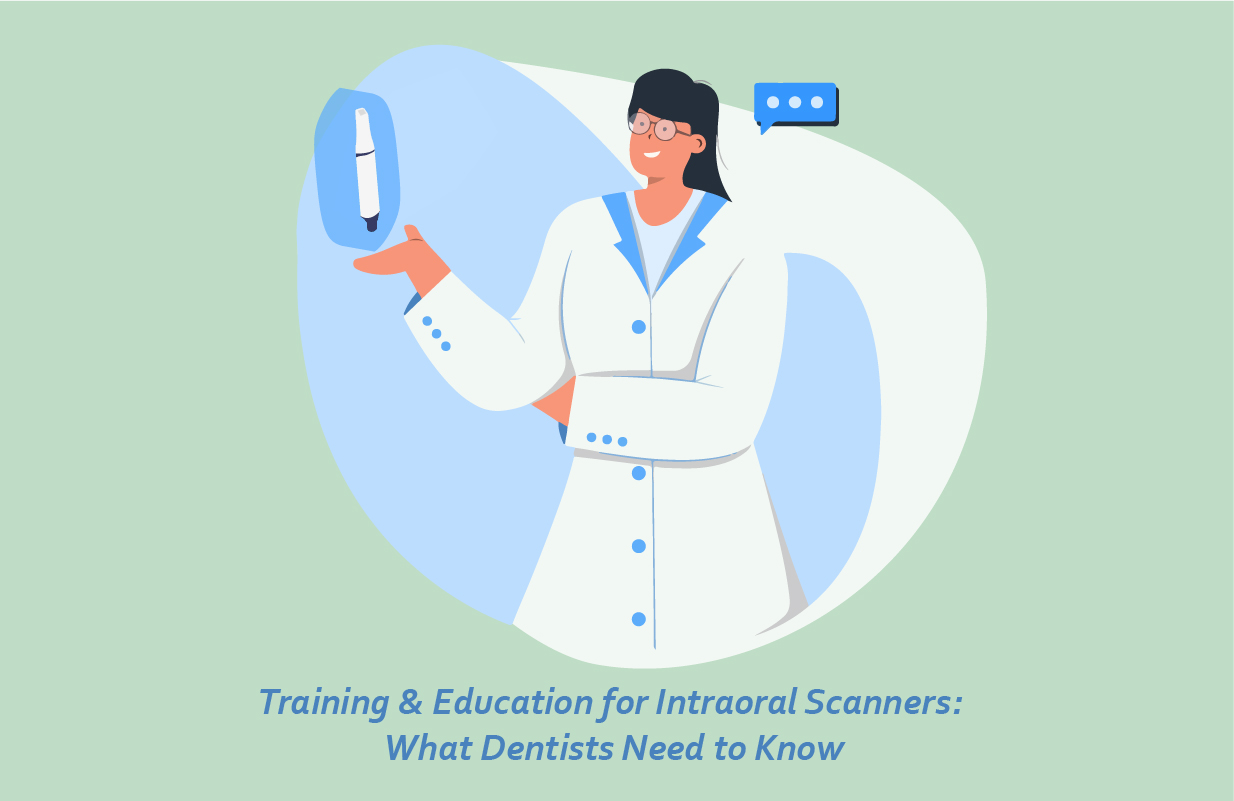In the ever-evolving field of dentistry, intraoral scanners are emerging as a crucial tool for providing efficient and accurate dental care. This state-of-the-art technology allows dentists to obtain highly detailed digital impressions of a patient's teeth and gum, replacing the need for traditional dental impressions. As a dental professional, it's essential to stay up-to-date with the latest advancements in the field. While intraoral scanning offers many benefits like increased efficiency, convenience and enhanced communication with labs and patients, implementing this technology requires proper education and training. In this blog post, we'll discuss the importance of training and education for intraoral scanning and what dentists need to know to excel at it.
The Benefits of Intraoral Scanners
Intraoral scanners have transformed the way dentists perform diagnostics, treatment planning, and patient communication. By capturing high-resolution 3D images, intraoral scanners provide a wealth of benefits such as:
Improved patient comfort: Digital impressions eliminate the need for gooey impression materials, making the process more comfortable for patients.
Enhanced accuracy: Digital impressions are more precise than traditional impressions, leading to better fitting restorations and appliances.
Time savings: Intraoral scanning speeds up the overall treatment process, both in the chair and in the dental lab.
Effective communication: Digital files can be easily shared with labs, colleagues, and patients, promoting efficient collaboration and patient understanding.
Given these advantages, it's clear that mastering an intraoral scanner is essential for contemporary dental practices.
Training and Education for Intraoral Scanners
There are several ways for dentists to acquire the necessary skills and knowledge for effective intraoral scanning, including:
Dental School and Continuing Education Courses
Many dental schools now incorporate intraoral scanners into their curricula, ensuring that new dentists are well-versed in the technology. For practicing dentists, continuing education courses focused on digital dentistry and intraoral scanning techniques are widely available. These courses often include hands-on training and lectures from experienced professionals in the field.
Upfront Training with the Manufacturer:
When purchasing an intraoral scanner, manufacturers typically offer comprehensive training programs on how to use the scanner and associated software. This training can be in the form of online tutorials, webinars, or in-person workshops. Becoming familiar with the scanner's software and capabilities is vital to establish best practices, ensure proper technique and avoid common mistakes.
Peer-to-Peer Learning
Collaborating with colleagues and attending dental conferences are excellent ways to stay informed about the latest advancements in intraoral scanning. Engaging in discussions, case studies, and demonstrations will help you learn from your peers' experiences and refine your techniques.
Practice, Practice, Practice
Like any skill, becoming proficient in intraoral scanning requires practice. The more you use your scanner in real-world applications and procedures, the more proficient you and your team will become. Consider starting with simpler cases and working your way up to more complex restorations and implant procedures.
Tips for Success with Intraoral Scanning
To maximize the benefits of intraoral scanners, dentists should consider the following tips:
• Invest in a high-quality scanner with a user-friendly interface and reliable customer support.
• Keep the scanner software updated to ensure the best performance and access to new features.
• Develop a scanning protocol for consistent results and to minimize the learning curve for new staff members.
• Regularly review cases and collaborate with lab partners to refine techniques and identify potential areas for improvement.
• Stay informed about new developments in digital dentistry, as the field is continually advancing.
By prioritizing training and ongoing education in this area, dentists can ensure they're well-equipped to harness the full potential of this cutting-edge technology. By incorporating intraoral scanning into their daily practice, dentists can offer patients an enhanced experience while improving the overall efficiency and effectiveness of their treatments.
Post time: Jun-01-2023






